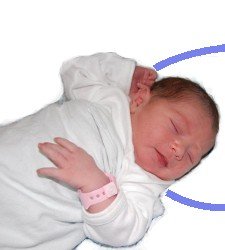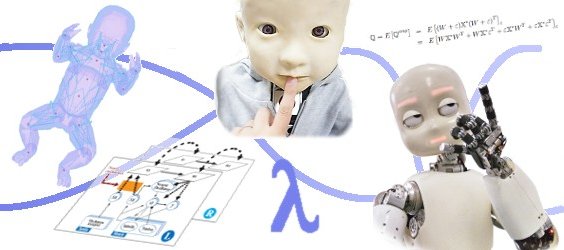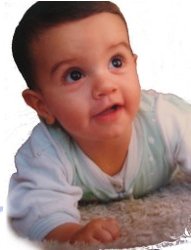Keynote Speakers
Denis Mareschal: Connectionist models of infant learning development

Abstract: Connectionist networks are neural information processing systems loosely based on brain processes. They attempt to provide mechanistic and process accounts of learning and development. In this talk, I will begin with a brief introduction to connectionist methods and discuss what makes them stand out from other modelling approaches. I will then review three examples of how modelling infant learning and behavior (object permanence, perceptual categorization, and statistical learning) has led to testable empirical predictions and a greater understanding of infant development.
Biography: Denis Mareschal obtained his first degree in Physics and Theoretical Physics from Cambridge University. He then completed a Masters in Psychology from McGill University before moving on to complete a PhD in psychology at Oxford University. He has received the Marr prize from the Cognitive Science Society (USA), the Young Investigator Award from the International Society on Infant Studies (USA), and the Margaret Donaldson Prize from the British Psychological Society. His research centers on developing mechanistic models of perceptual and cognitive development in infancy and childhood. He is currently Professor at Birkbeck University of London, and a fellow of the Association for Psychological Science.
Verena V. Hafner: Sensorimotor learning and development in intelligent autonomous systems
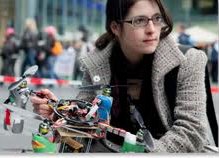
Abstract: Sensorimotor skills are an important aspect of infant development and also play a major role in robotics. In developmental robotics, sensorimotor interaction is even seen as a prerequisite for the development of intelligence. In this talk, I will present internal models based on inverse and forward models that generate an internal simulation of an intended or observed behaviour. These models are learned during an exploration phase on a humanoid robot and are therefore ideally adapted to its morphology and environment.
Biography: Verena V. Hafner is currently Junior Professor at Humboldt-Universität zu Berlin and head of the Cognitive Robotics Group at the Department of Computer Science. She holds a Masters with distinction in Computer Science and AI from the University of Sussex, UK, and a PhD from the Artificial Intelligence Lab, University of Zurich, Switzerland. Before moving to Berlin, she worked as an associate researcher in the Developmental Robotics Group at Sony Computer Science Labs in Paris, France. She has published more than 70 papers in renowned scientific journals, books and peer-reviewed conference proceedings. Her work has been cited more than 1100 times. She is PI in a graduate school on sensory computation in neural systems (DFG, 2010-2015), PI in the graduate school METRIK (DFG, 2010-2015), and PI in the EU FP7 STREP EARS on Embodied Audition for RobotS (2014-2017). Her research interests include sensorimotor interaction and learning, joint attention, communication, and behaviour recognition.
J. Kevin O'Regan: Deducing abstract concepts without knowing what you’re looking for -- the example of space

Abstract: Space pervades our thinking. When we study child development, or when we construct robots to live in our world, we implicitly assume that space exists, and we presuppose that cognitive processing is geared to take account of that fact. But could this be cheating? Somehow space must have been discovered over years of evolution, or else it must be rediscovered by each individual’s brain during maturation. How could this come about without knowing a priori that space exists? I shall present work that suggests that space may be a way of economically accounting for unknown and unlabeled sensory input and output. Space can be discovered without first knowing its existance, if brains are provided with an algorithm that attempts to abstract simple laws accounting for the effect of their actions. I shall illustrate the idea using a simple artificial agent and show how the agent will come to behave as though it possesses spatial notions like path integration and shape constancy. I shall try to link the work to the development of spatial abilities in infants and animals.
Biography: Kevin O'Regan is ex-director of the Laboratoire Psychologie de la Perception, CNRS, Université Paris Descartes. After early work on an eye movements in reading, he was led to question established notions of the nature of visual perception, and to predict, with collaborators, the phenomenon of "change blindness". In 2013 he obtained a five year Advanced ERC grant to explore his "sensorimotor" approach to consciousness in relation to sensory substitution, pain, color, space perception, developmental psychology and robotics. Kevin O'Regan has recently published a book: "Why red doesn't sound like a bell: Understanding the feel of consciousness" with Oxford University Press.
Gregor Schöner: Dynamical Systems Thinking: from metaphor to neural theory

Abstract: Dynamical Systems Thinking has had considerable impact on developmental psychology, both by providing fruitful metaphors for how to look at behavior and cognition and how they are shaped by experience and through specific sets of observations in the motor and cognitive domains. Dynamic Field Theory is an effort to transform Dynamical Systems Thinking into a mathematically formalized and neurallly grounded approach. I'll review Dynamic Field Theory and illustrate its core concepts through exemplary studies in early motor, cognitive, and perceptual development, I will emphasize that Dynamical Field Theory is a neural process account and will illustrate that fact through implementations of Dynamical Field models on autonomous robots that emulate human behavior.
Biography: Prof. Dr. Gregor Schöner is the Director of the Institute for Neural Computation, holds the chair for Theory of Cognitive Systems, and has joint appointments in the Faculties of Physics and of Electrical Engineering. For the last 25 plus years, Gregor Schöner has brought to bear his background in theoretical physics on interdisciplinary research in cognitive and neuroscience as well as in autonomous robotics and computer vision. Working closely with experimental groups, he has developed theoretical concepts and models to understand movement, perception, and embodied cognition on the basis of dynamical systems ideas. Contributions include predicting signatures of instability in movement coordination, the principle of the uncontrolled manifold in multi-degree of freedom movement, and Dynamic Field Theory accounts for sensory-motor decision making, perseverative reaching in infancy, habituation in infant looking, change detection and other elementary forms of cognition. He has used such theoretical ideas to contribute to autonomous robotics, developing the attractor dynamics approach to robot motion planning, and neural dynamics approaches to sequence generation and behavioral organization. He has held academic positions in the US, France, and Germany, has published over 200 scientific articles and frequently lectures all over the world.
Hiroki Mori: A synthetic approach toward fetal development: Can whole body fetal simulation lead to new insights for human development studies?
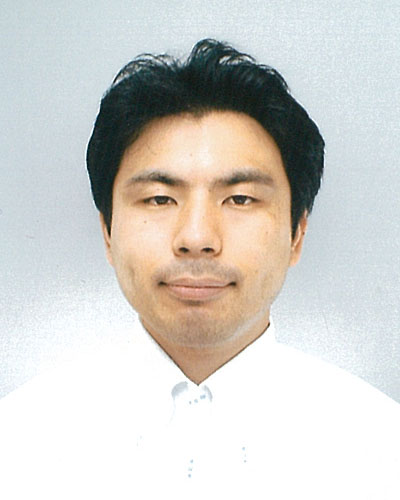
Abstract: We would like to understand fetal development from a perspective of a self-organizing emergent process within the uterine environment, during which fetuses have abilities to memorize sensory information and change their behaviors. The relevance of this developmental phase becomes well visible for preterm infants, who have less uterine experience and show higher risk for developmental disorders compared to term infants. In order to investigate how an interaction between a fetus and the uterine environment affects development, we have constructed a fetal whole body musculoskeletal model and an uterine environment model as a computer simulation. To explain the behavioral development of the fetus in first half of the pregnancy, we hypothesized a mechanism that leads from tactile sensation to the reflexive fetal behaviors. We conducted a computer simulation experiment and the result indicate that the model induces behaviors corresponding to those observed during human fetal development. Therefore, this kind of computer simulation studies seems to be a promising way to investigate human development from a perspective of dynamical systems.
Biography: Bachelor of Engineering from Toyohashi University of Technology in 2004; Master of Engineering from Toyohashi University of Technology in 2006; Ph.D of Information Science and Technology from The University of Tokyo in 2011; Assistant Professor in Osaka University from 2011.
